Image Credit: David Murakami Wood
Image Credit: David Murakami Wood The first floor of the house is dominated by a large open space on the south side. The second floor has two generous bedrooms, a walk-in closet that could be converted to a small bedroom, a lounge, and a bathing area. Exterior walls are built around a structural core of cross-laminated timber 4 1/3 inches thick.
Editor’s note: David and Kayo Murakami Wood are building what they hope will be Ontario’s first certified Passive House on Wolfe Island, the largest of the Thousand Islands on the St. Lawrence River. They are documenting their work at their blog, Wolfe Island Passive House. For a list of earlier posts in this series, see the sidebar below.
After a couple of weeks of intensive work between the architect (Mikaela Hughes), our passive house consultant and middleman to the suppliers (Malcolm Isaacs), and ourselves, we have the final plans. With the house being factory-built from cross-laminated timber (CLT), there are far fewer changes we can make after this point than to a conventional stick-framed house. But we’re happy with things.
The house is small by North American standards, with under 1,600 square feet (or less than 150 square meters) of interior area, and that’s the way we like it. We’ve tried to combine elements of what people around here expect a house to look like, to reflect something of the village feeling, but at the same time, this is not an ordinary house nor does it entirely look like one.
However, the differences are subtle — at least from the outside.
Passive solar orientation
First, the orientation and balance are not what people would expect. The windows are predominantly on the south side, regardless of the view, in order to maximize passive solar gain. The southern roof will be completely covered in panels for solar water heating and PV generation. The windows on the east and west bring in light in the morning and evening but also are designed for cross-ventilation in the summer. On the north side, windows are minimal, but this also produces an interesting and slightly whimsical pattern.
This solar orientation also affects the interior structure and layout. Places where we will spend most of our time and want to be brightly lit and warmest all are on the south side, whereas the north side of the house has all the utility spaces.
Downstairs, an open floor plan
The ground floor is dominated by a relatively large space, running the whole length of the house, from the kitchen in the east through the dining room to the lounge in the west. I use the conventional terms because that’s how we’re thinking of the space, although the latter two “rooms” are entirely flexible in how they could be used and laid out.
The main entrance is in the northwest corner, and this is where the first element of Japanese thinking comes in. The “genkan” (entrance hall) is a place where you take off outdoor clothes, including shoes — we don’t wear outdoor shoes in the house — and there is a deliberate change of flooring to indicate where this transition occurs. Also in the north half of the ground floor is the utility/machine room, where all the tanks, the energy-recovery ventilator, the control panels, the washing machine, etc. will be. And finally, there’s a dedicated pantry for all the kitchen and food stuff, freeing up the kitchen area itself for actual cooking (which we both enjoy).
The bedrooms face south
Upstairs, there is a small landing area, and again the south-north split is evident. On the south side, we have two generously sized bedrooms, and in between a Japanese sitting room with a raised wooden platform covered with tatami (woven grass) mats. This will also double as a guest bedroom, with futons stored beneath the tatami. To the north, there is a walk-in closet, which could be converted into a smaller bedroom if necessary, and on the northeast corner, a Japanese-style bathroom space, with separate water closet, a changing room, and a wet room containing the shower and soaking tub.
The chimney from the stove, the solar thermal pipes, and the PV cables will run through the central core of the house from the utility space below up through the storage attic above. The whole house is designed to minimize the distance that water has to travel and the length of pipes from toilets, etc.
Outside, the roof extends well out from the wall line, to provide shade for the upper windows from the harshest overhead sun, while maximizing the solar gain at other times. Downstairs, the same effect is created by the porch that runs all along the west and south sides of the house.
Twelve inches of rigid foam under the slab
The most important thing about a Passive House is the envelope: the foundation, walls, and roof. In the sections drawings (see Image #4, below), you can see what we are going for.
We’re not deviating much from the standard way most Passive Houses do things with the foundation, which will be an engineered concrete slab with 12 inches (305 mm) of expanded polystyrene (EPS) insulation beneath the slab and about 10 inches (255 mm) of vertical EPS at the edges. The insulation continues out well beyond the foundation itself to provide a frost skirt around the whole foundation. This is the only significant amount of petroleum product we’ll be using in the whole house and one that couldn’t be avoided.
The timber walls are over 4 inches thick, not counting insulation
The external walls of the house are 4 1/3 inches (110 mm) thick cross-laminated timber (CLT), wrapped in 11 inches (280 mm) of rigid wood fiberboard insulation, followed by a vapor-permeable moisture barrier and local white cedar siding. The CLT sits on the concrete foundation and the fiberboard forms a continuous layer of insulation with the EPS beneath.
The roof also is CLT, but there’s a lot more fiberboard insulation up there: around 14 1/16 inches (360 mm). The roofing will be steel. This will last a long time, and when it does eventually need to be replaced, it can be recycled.
R-50 walls and an R-60 roof
So how will this design perform? What about R-values and U-factors?
The wall structure should be just over R-50, and the foundation significantly better. The roof structure will be more than R-60. There will be other houses with higher claimed R-values, but the figures here are not claims but are based on tested values for the components, certified by the Passivhaus Institut in Darmstadt, Germany.
What’s more, with the precision cutting of the manufacturing — we’re talking 1 mm tolerances — the tightness of the house will be unparalleled, and the windows and doors (about which more in a later post) will be much better performing than any equivalents more commonly available in Canada.
There are other considerations when it comes to what kind of R-values we are aiming for. First, we’re by no means in the coldest part of Canada: -25° Celsius (-13°F) is about as cold as it gets here in February — and it is never that cold for more than a few days at a time — compared to -45°C (-49°F) in places like Edmonton.
Second, we will have to burn some wood for water heating anyway, which means that the house will never be anything less than comfortably warm in winter. And finally, we already will be exceeding the requirements of the Passive House standard. In short, pushing for much higher performance would mean significantly increased costs and a more bulky look to the house, and all for very limited noticeable gain.
We think we’ve got the balance right.
Weekly Newsletter
Get building science and energy efficiency advice, plus special offers, in your inbox.

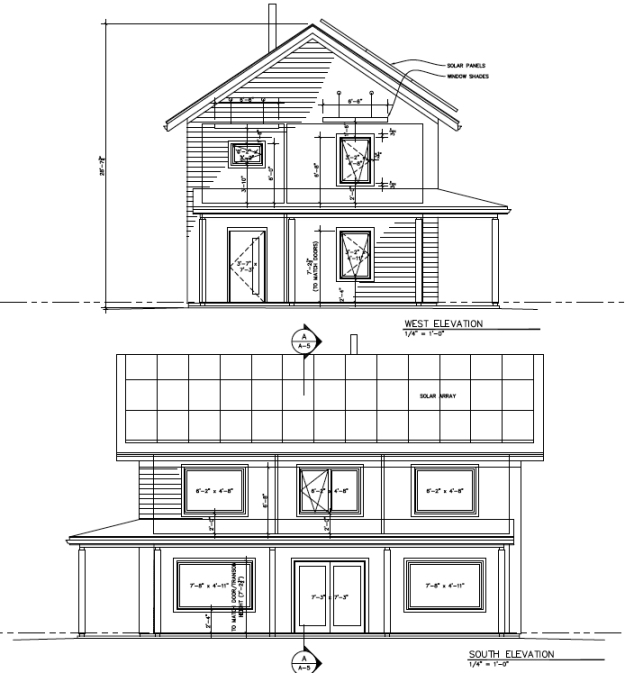




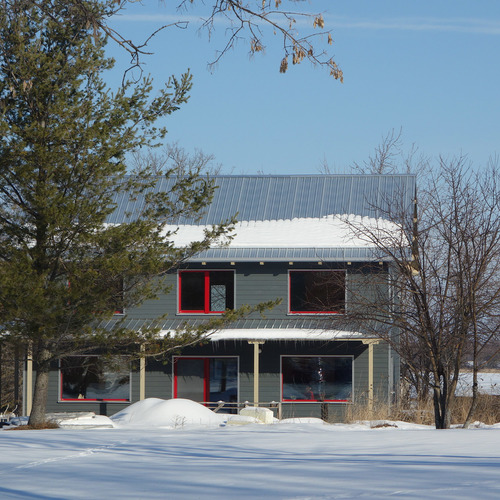
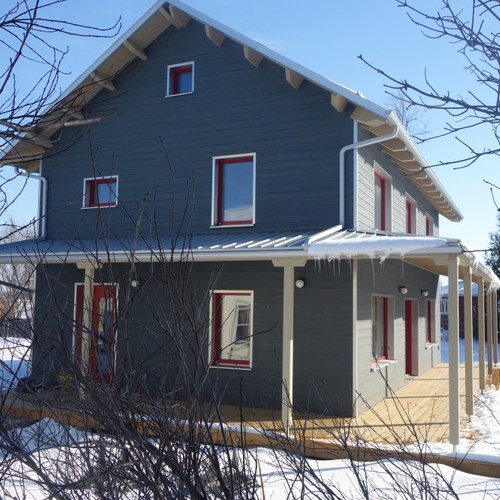
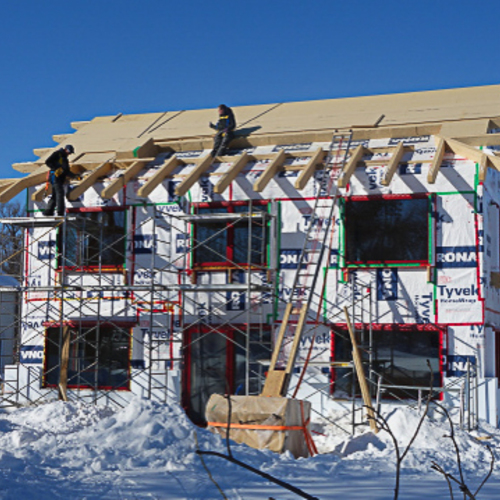
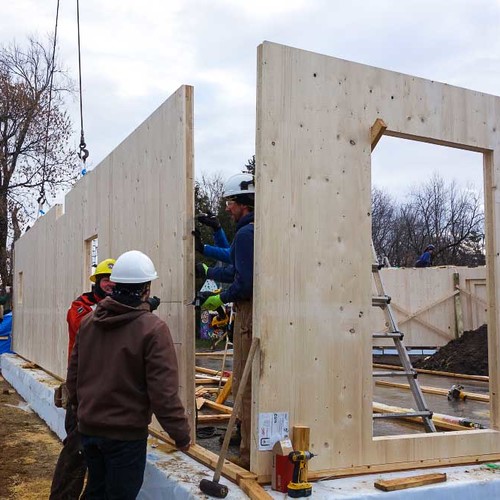






7 Comments
Old school CLT
It suddenly occurred to me that panabode is kind of the original CLT. They are solid cedar 4"x6" with tongue and groove that were invented in the 50's. Without insulation they are inadequate, but with exterior fiberboard they would function in much the same way as CLT. The interior walls are left as finished cedar. There are many kits of all shapes and sizes for shipping and would be no doubt easier to ship than full scale walls. Any thoughts?
Ven
I've built about a dozen Panabodes over the last twenty years. The big difference between them and CLT is the initial shrinkage and seasonal movement. Like log structures that movement has to be built into all the windows, doors, stairs and post details. I'm not sure how exterior insulation would work.
Panabode has had ongoing problems with code compliance, both because of inadequate insulation levels and seismic concerns. Some time ago they went from a 2 1/2" wide 'log" to 3 1/2" in an attempt to deal with these issues. As you can imagine that also increased the price substantially. I don't know where they are with all these issues right now.
Japanese elements
I love to see the O-furo in the bath. I miss going to the Sento. And yes, I am also putting a Genkan into the Net-Zero-Ready house I am building in "Glosta" Mass. Japanese style, no shoes in the house. With Shoji. Not paper though for little grandchildren fingers to poke through- Kalwall (acrylic) panels framed in wood. But no Tatami. (Where would you get Tatami in the US or Canada?) Still figuring out where to put the Tokonoma. Japanese-American "Fusion" house?
James Kreyling ...about Tatami
The surface mat of tatami can be ordered on line for about $25 mat. These days we simply attach the mat to closed cell foam mat and it is immune from the damp. It is also more comfortable like that. Traditional units cost $180 and weigh about 50 pounds and should not be used on damp surface.
overheating
Great layout IMHO. I love the large, bright, open Kitchen, dining, living areas. I love the large pantry. I love the large walk-in closet upstairs that COULD be made into a bedroom.
And, my intuition says that the south-facing windows are large enough that the house is likely to overheat in the winter. Please keep us posted on performance during the winter of 2016-2017.
overheating (and more)
Dear all,
Thank-you for the comments. I'm sorry we haven't responded earlier but I was having trouble with my GBA account - seems to be fixed now.
On the question of overheating via the large south-facing windows, both the main roof overhang and porch are specifically designed to prevent 'high sun' from heating the building in summer and shoulder seasons. It's very important with houses that use passive solar design to take account of the angle of sunlight at the specific latitude at various times of year. Jumping ahead (in terms of this guest blog), we noticed the difference immediately that the porch was built in cutting the excess summer sun heating through the downstairs windows. We are yet to see how it will be in winter, but it seems to be comfortably warm in the fall without even deploying the HRV. In general, excess heat is a happier problem to have to deal with in the Canadian winter than not enough!
On the Japanese room, we'll be writing about that soon (on our own blog). Our tatami mats are real tatami, not the foam pads with matting on top. If humidity is a real problem for you then the latter are okay, but they are nothing like the real thing! Although we haven't had the monitoring equipment installed yet to measure (and we may have it from this November), passive houses tend to be drier than normal houses, if anything, so we don't have the problem of damp to contend with.
On the Japanese bathroom, this is now compete IRL and it is beautful. Just waiting for the glass doors to be installed and the electrical supply for the hot water to be connected and we will be able to use it. Again, there will be a blog entry soon...
Thanks again of the comments, and please feel free to ask any questions in these threads or directly!
CLT Supply
I've been in contact with various CLT suppliers, including Zublin. Zublin put me in touch with an outfit in Bozeman, Montana as their US contact. Did you work through a North American contact for your CLT or direectly with Zublin. Thanks!
Log in or create an account to post a comment.
Sign up Log in